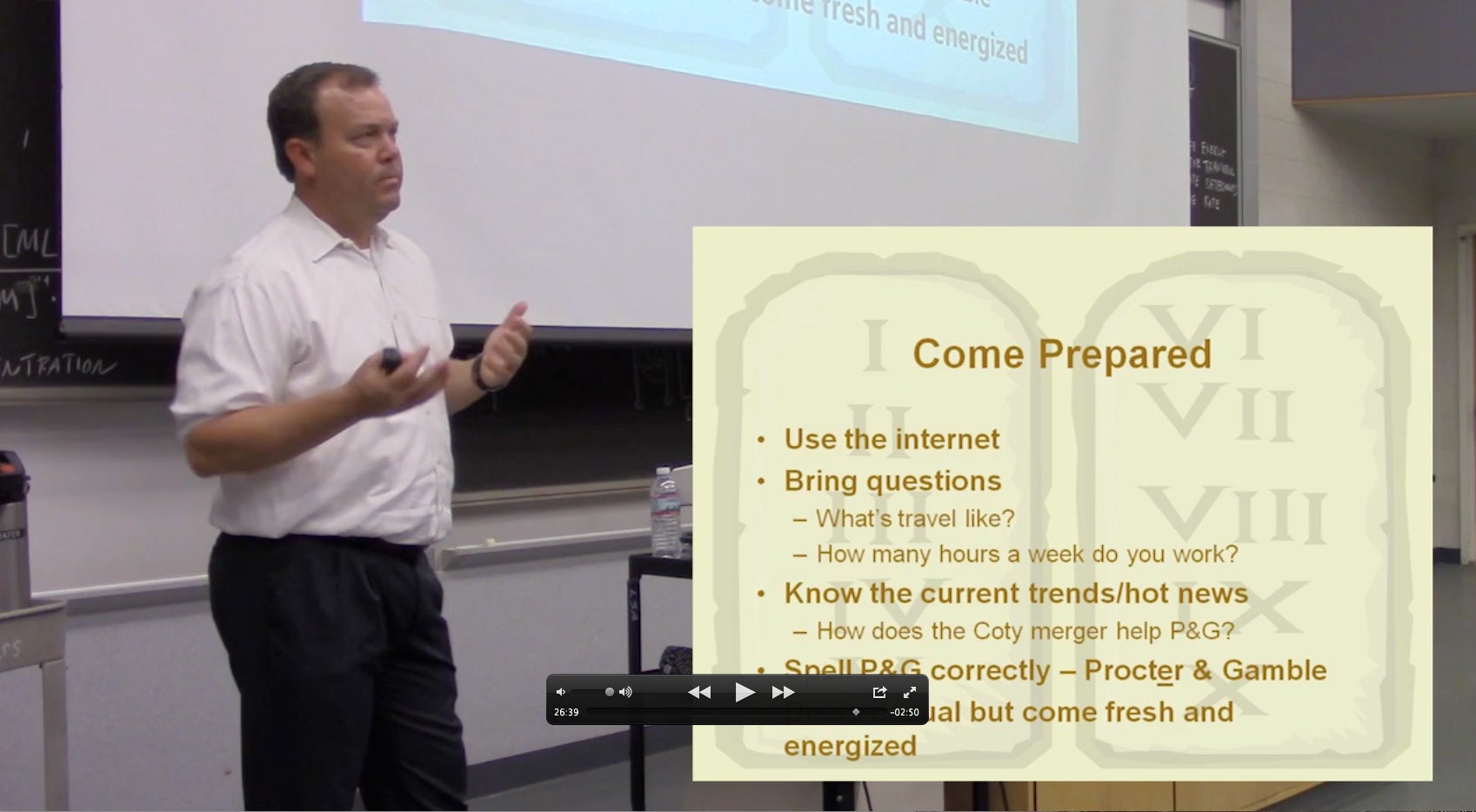The Ten Commandments to Ace the Campus Interview: Strategies and Advice from Recruiting at P&G

CALC|UM welcomed Scott Osborn from Proctor and Gamble (P&G) to help demystify the interview process. Dr. Osborn, who received his PhD from U of M in 1996, is currently the Section Head of Beauty Measurement Science Organization at P&G. Notably, Scott has been recruiting for P&G for 15 years, now serving as the lead recruiter for all technical functions on the Michigan campus.
Dr. Osborn used his extensive experience with recruiting to provide earnest advice on how to excel in an interview to a crowd of eager students. The talk focused on several key themes: self-reflection and concise communication.
Many PhD students feel the pressure to find a job before graduating, and may feel the need to apply for as many positions as they can. Scott stressed that students should take the time to map out what they want to do, where they want to live, etc. before diving into the application/interviews. It is evident in the interview who is truly interested in the company, and nobody benefits from a half-hearted effort towards every possible position.
In addition to contemplating your future, effective interviewees have also reflected on their past. What were some of the challenging situations in your life, and how did you overcome these issues? A wide assortment of examples where you relied on leadership, teamwork, and/or communication skills can provide an impressive demonstration of these positive attributes. Despite the common perception that the last few years is the only relevant time period, Scott suggested that we go back further and focus on our major experiences. High school and college roles are perfectly acceptable, especially if they can be woven into a consistent story or theme. However, each response should focus on one specific and concrete example only.
A simple and extremely useful framework to guide your conversation is the CAR method: Context – What was the situation? Action – What did you do to improve the situation? Result – How did the situation change from your action? Oftentimes, people place way too much emphasis on the context of the situation, and may give little or no attention to the results. Time is especially limited in on-campus interviews, so the CAR method can be used to help focus your answer to the key points. What exactly do you want the interviewer to learn from your story?
Clear and concise language is also essential for discussing research. The interviewer needs to learn certain things about you as well as a dozen other people every day. Focus on the big issues of your research (emphasize the “so what”) and be clear about how you are addressing them. Use accessible language so that everyone can understand, and limit the research talk to about 10 minutes (in a 45 minute interview). Printed slides can do wonders to help illustrate a concept or depict a mechanism (and save lots of time). Remember that many companies use highly interdisciplinary teams to solve research problems, and recruiters are looking for individuals that can communicate the science to business, marketing, AND science specialists.
Students remained well after the presentation, peppering Dr. Osborn with questions ranging from “how to approach recruiters at career fairs” to “what experiences should be included on a resume”. After a long and fruitful discussion, we basically had to kick people out to move on to the next portion of Scott’s visit, which was one-on-one resume reviews. A select group of people were able to meet with Scott to receive honest feedback and work towards a document that markets their skills in a genuine way.
Dr. Osborn gave students a rare glimpse into the mind of an on-campus recruiter, and provided candid advice that drew on his many years of experience. With practice, students can implement these strategies to bring their interview skills up to the same level as their research accomplishments.
Video: The Ten Commandments
Powerpoint slides: The Ten Commandments

